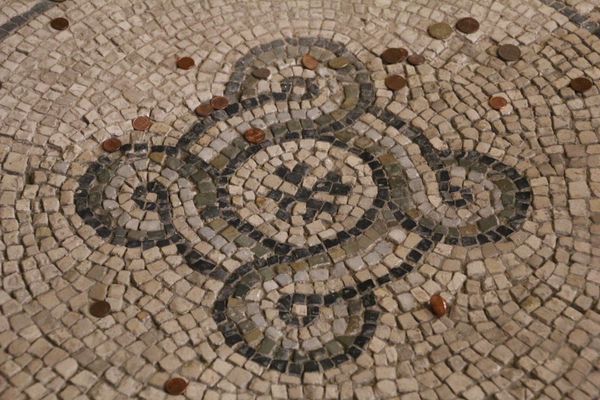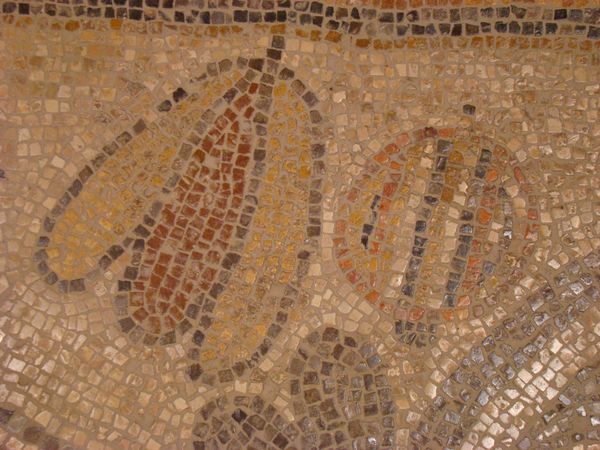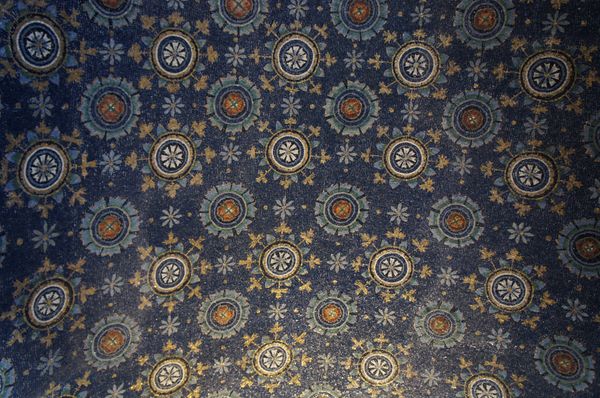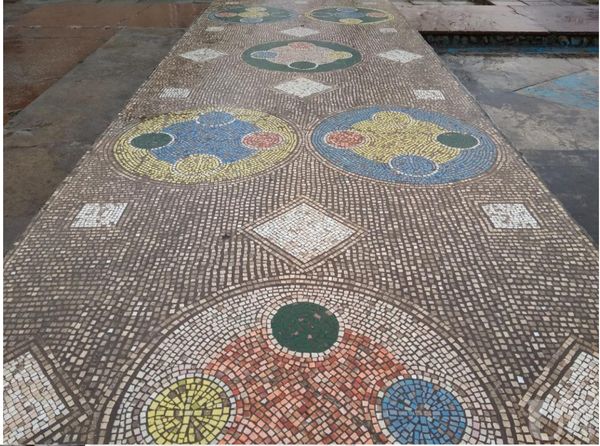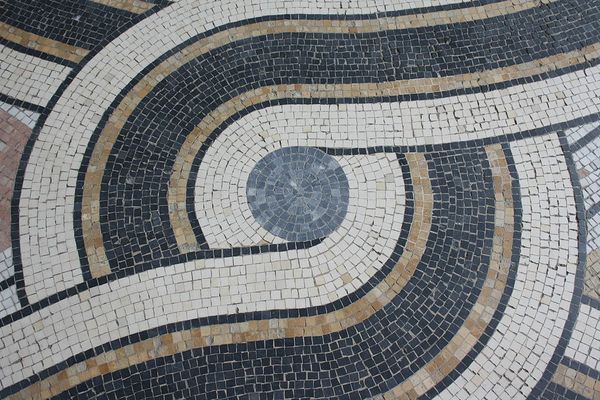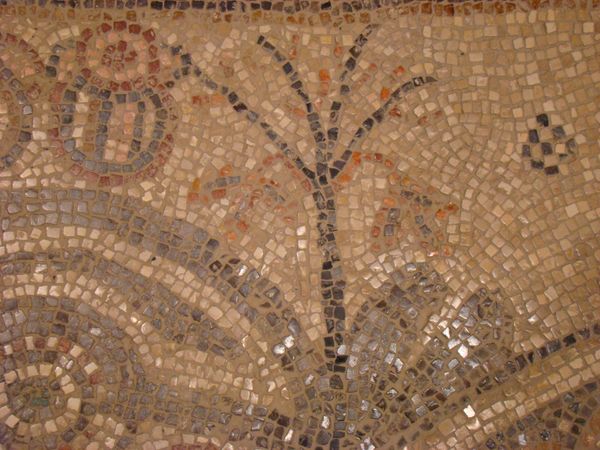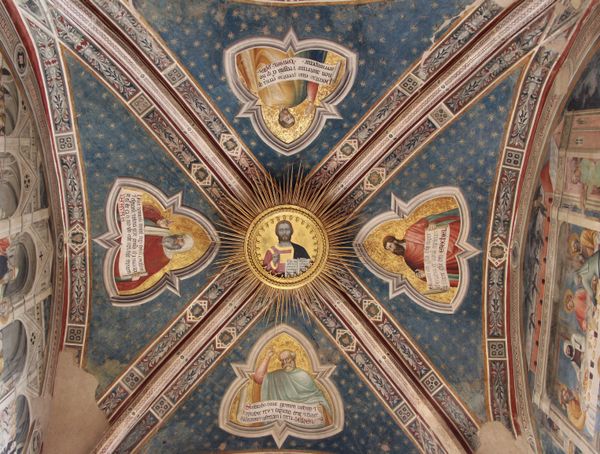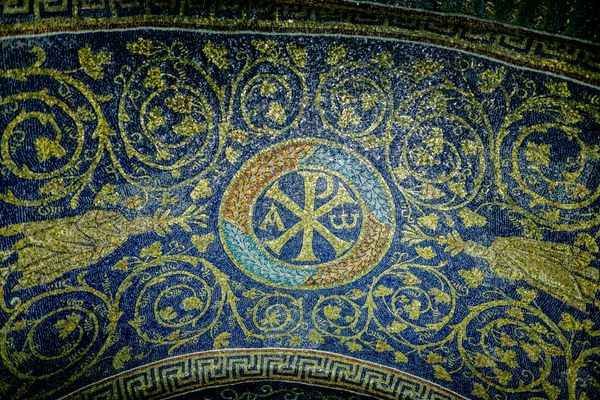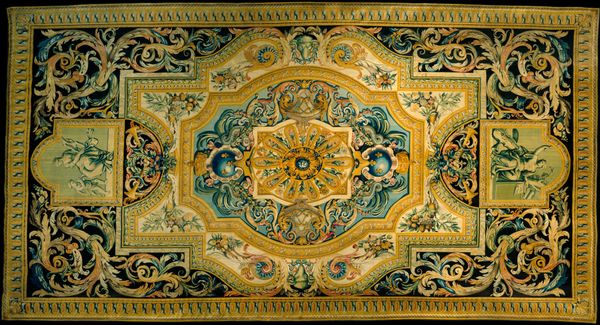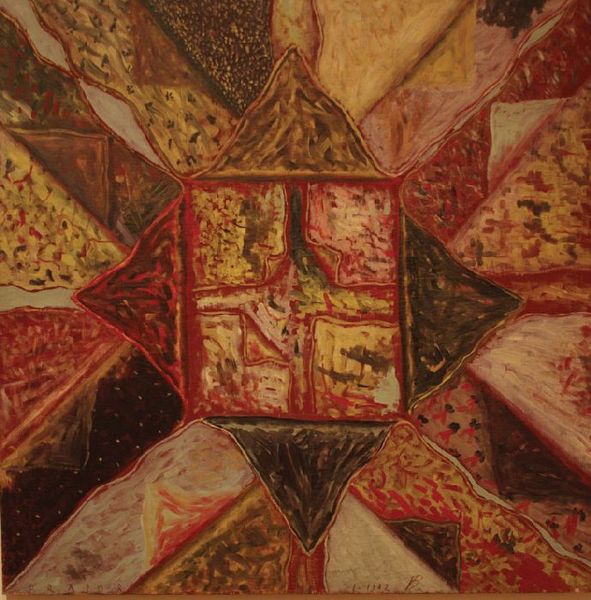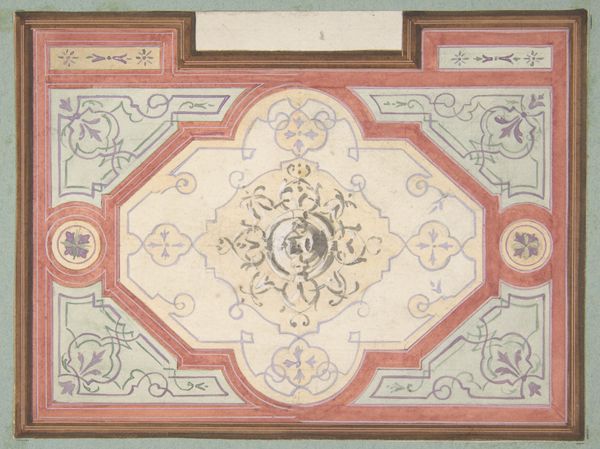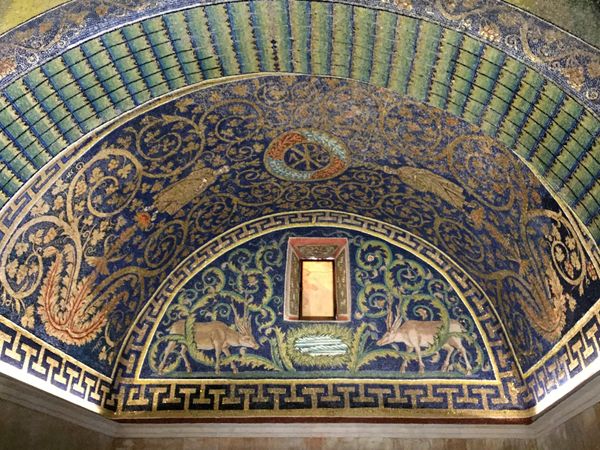
Tiles with the devices of Claude d'Urfé 1552 - 1565
0:00
0:00
ceramic
#
ceramic
#
11_renaissance
#
decorative-art
#
italian-renaissance
Dimensions: H. 21 x W. 42-1/4 in. (53.3 x 107.3 cm)
Copyright: Public Domain
Curator: Looking at these decorative ceramic tiles, originally crafted between 1552 and 1565 by Masséot Abaquesne, I'm struck by the intricate patterns and their palpable connection to the Italian Renaissance. Editor: They immediately evoke a sense of faded grandeur. The color palette of muted yellows and blues creates a tranquil yet somber atmosphere, like a memory struggling to retain its vibrancy. Curator: Precisely. And, beyond the immediate impression, notice how Abaquesne uses repetitive geometric motifs. This not only constructs visual harmony, but it also communicates a symbolic order, echoing Renaissance ideals. Each tile interlocks seamlessly into a greater scheme of emblematic power, suggesting themes of wealth, status, and personal identity during the period. Editor: So, how would the arrangement and function of these tiles reflect societal conventions back in their original location? What sort of patron commissioned these works? Curator: These 'Tiles with the devices of Claude d'Urfè,' as the work is titled, speaks directly to courtly patronage. The inclusion of heraldic emblems makes that case very plainly, in fact. Abaquesne, of course, aimed to ennoble both the patron and their setting through design. Their integration would not have been only ornamental but functional, too: arranged along the floors or perhaps incorporated as panelling into rooms as part of a sophisticated program. Editor: And beyond their explicit function as status symbols, could the selection of specific symbols by the tiles reflect anything in terms of societal shifts or new cultural influences? Were these accessible for only select segments within communities at that time given these material features? Curator: Excellent questions. The choices of emblem may signify new affiliations of Claude d’Urfè within diplomatic circles. Certainly access would have been delimited to those elites granted physical access and trained, learned visual reading. That's key here. Editor: Thinking about the tiles collectively—their materiality, recurring designs and potential role—we can more deeply appreciate the role such artworks performed. Curator: A refined system of symbolic and material codes within an environment! It underscores how art acts as a subtle transmitter across space and time, wouldn’t you agree?
Comments
No comments
Be the first to comment and join the conversation on the ultimate creative platform.
